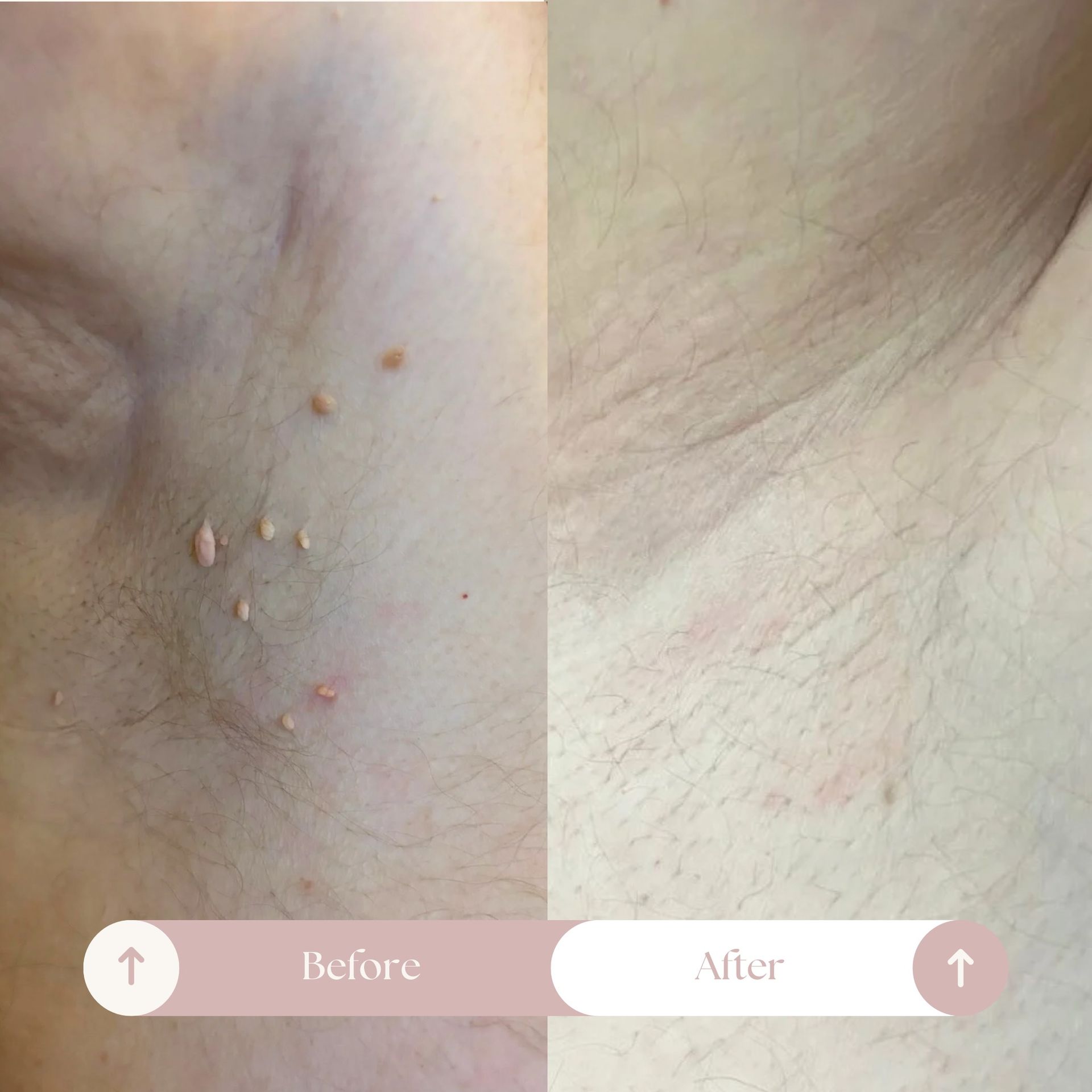Cryotherapy
Safe, quick and effective
Cryotherapy is a safe, quick, and effective treatment for removing skin tags and other minor skin lesions.
The process uses targeted cold technology to gently freeze away unwanted areas - it’s virtually pain-free, fast, and requires no downtime.
Many clients are surprised at just how easy the treatment is, and love the confidence boost that comes with clearer, smoother skin.
Ready to find out if cryotherapy is right for you?
Frequently asked questions
How safe is cryotherapy?
Cryotherapy is a relatively low-risk procedure. CryoPen® delivers N20 directly to the lesion, and not the healthy surrounding tissue. CryoPen® is both CE and FDA registered.
How long are CryoPen® treatments?
The penetration rate of freezing with the CryoPen® is approximately 1mm per 5 seconds, with a maximum freezing depth of 3 to 6mm depending on the used applicator. The duration of the treatment time will depend on the surface area and the thickness of the tissue being treated. Upon the clinical evaluation of the thickness of the lesion, the operator will choose an application time from 1 to 30 seconds..
Is the treatment painful?
There will be a pain sensation similar to a ballpoint pen being pushed onto the skin when the nitrous oxide reaches the bottom of the lesion. There might be a little residual stinging for a few minutes after treatment. Occasionally a blister might form and persist for a few hours.
Will there be a follow up session?
A follow up visit is recommended after 2 to 4 weeks to confirm that all pathological tissue has disappeared or if a follow up treatment is necessary.
What if I have darker skin?
Repeated short freezing cycles of 3 to 6 seconds at two-week intervals are recommended if you have a darker skin type.
Are there any side effects?
CryoPen® Therapy is relatively low risk. There are a few side effects that may occur as a result of treatment, including:
- Pigmentary changes (hypopigmentation and hyperpigmentation)
- Nerve damage (particularly in areas where nerves lie close to the surface of the skin, on fingers, wrist, area behind the ear)
- Shards of frozen ice (minor shards of frozen ice may blow out, that will thaw on contact with healthy skin)
- Hair follicle damage and permanent alopecia (especially when treating lesions on sites with coarse terminal hair)
- Discuss any concerns with your clinician
How much will the treatment cost?
The cost of treatment will depend on the size of the lesion. Make an appointment so we can assess your lesion.

